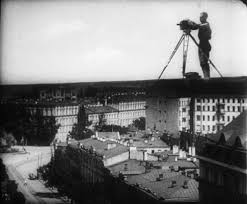According to Bill Nichols, The expository mode of documentary film making “rel[ies] heavily on an informing logic carried by the spoken word” and “addresses the viewer directly to…propose a perspective or advance an argument.” In expository documentaries the information being spoken is the most important aspect as it is the catalyst for informing the audience of the overall point of the film. It also allows the audience to understand the history of a particular event and the filmmaker’s side on the argument. The images however, “illustrate, illuminate, evoke, or act in counterpoint to what is being said.” That is, the images and narrative work in conjunction with one another to convey meaning.
Stranger With a Camera (2000) by Elisabeth Barret uses this mode of documentary film making to explain an extremely convoluted issue that happened in her home town when she was a young girl. In this film, she goes in depth about the strange murder of Canadian film maker Hugh O’Connor by native Kentuckian Hobert Ison. This resulted in the town’s positive view of Ison as O’Connor was seeking to make them look unseemly in his film.
This documentary uses a personal narrative by Barret to recount what happened initially in 1967 then goes into detail about the state of Kentucky at that time to add a point of reference to the shooting and why the people reacted the way they did. She then does into detail about how she felt and how her friends felt before going and interviewing people in the town to understand why this happened.
She uses the five elements of voice, according to Nichols, to come to her final conclusion and relay it to her audience. She uses Invention to show “evidence or ‘proofs’ in support of a position or argument.” She does this by interviewing people that knew each man and going back to look at all of the details from both sides. She uses the arrangement of the film to create the maximum effect of the film. She does this by arrange it in a linear way and using personal testimonials and her own narration to convey the whole truth as best she can. She uses style by creating a unique voice to the film. She arranged the film in such a way that gave everyone a voice, including Kentucky. This made it a more rounded film, rather than just a presentation of facts. She uses memory in a way that shows her own retelling of the story as well as others. She does this by juxtaposing images, old footage, O’Connor’s footage and interviews, as well as her own recounting of what happened to shape the story. Finally, Barret uses delivery to create a sense of community and purpose. Since she is from Kentucky she has a thick accent but speaks very well. Her use of personal narration is extremely important to the recounting of this murder and the towns involvement in It because it feels like she belongs and not like an outsider.


















